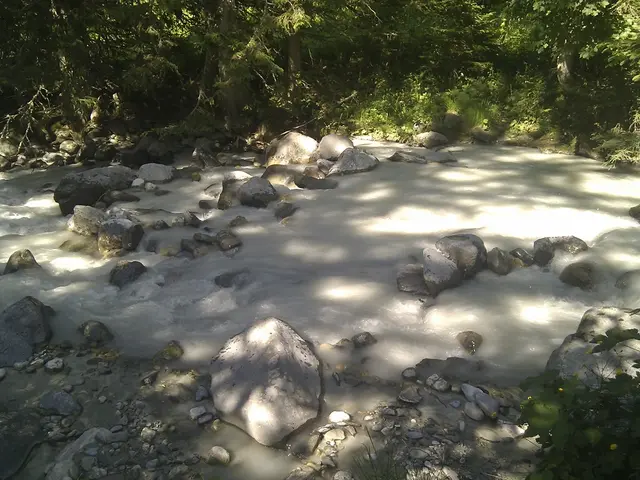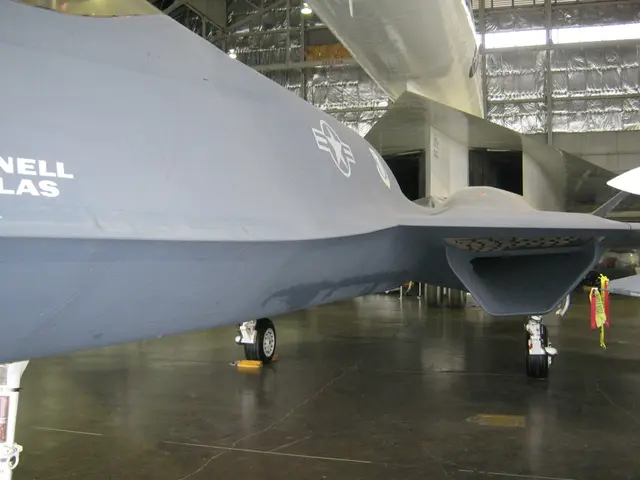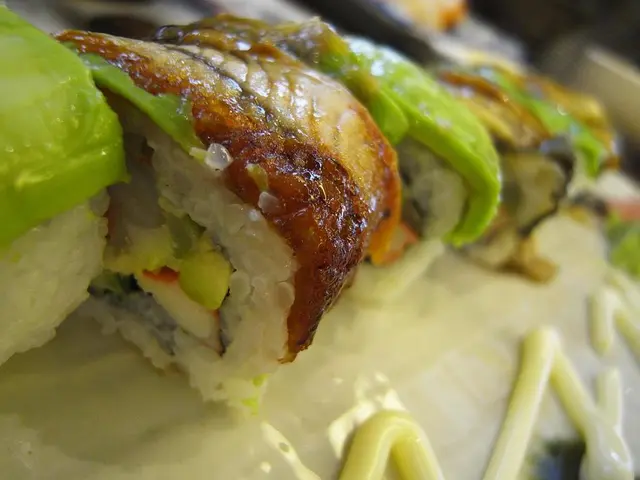Flyin' the C-101: A Ride Time Aviation Extravaganza
Airbus C-101's Enduring Impact and Spain's Patrulla Águila's Lasting Influence
For over four decades, the CASA C-101 Aviojet has soared the skies of Spain, leaving an indelible mark on generations of military aviators and thrill-seekers alike. But as the sun sets on the Aire25 festival in 2025, Spain's beloved C-101 will touch down for the final time, drawing an emotional farewell to its storied career.
Before the crowds gather to witness this historic moment, let's take a look back at this remarkable aircraft and its role in shaping Spain's aeronautical history.
The Quintessential Aviation Workhorse
Having undergone nearly 285,000 training flight hours and over 500 displays, the C-101 has been a dependable workhorse for the Spanish Air Force. For many of the 1,000 military pilots that have been trained in its tandem double cockpits, the C-101 is more than just a metal bird—it's a mentor, a teammate, and a fellow veteran.
"The C-101 is a noble aircraft," said Oscar Sanz, a member of Patrulla Águila for the past two years. "It's like a sage, teaching us everything we need to know about flight and the art of aerobatics."
Remembering his first flights with the Patrulla Águila, Sanz recounts the challenges that came his way: "The hydroloop was particularly difficult. You just don't believe you can pull it off, but with practice, you eventually find your rhythm."
Unmatched Performance and Versatility
With its broad flight envelope and wide speed range, the C-101 has been the perfect platform for the Patrulla Águila's daring displays, as well as an exceptional training aircraft for aspiring Spanish aviators.
"The C-101 doesn't have the raw power of some of its European counterparts, but it's like it was designed for us," Sanz explains. "It's agile, responsive, and always ready to teach us a new trick or two."
Patrulla Águila's rich history dates back to 1985, when the team was established in response to its predecessor, Patrulla Ascua, which was based on the F-86 Sabre. Like the C-101, Patrulla Águila has come to embody the courage, skill, and camaraderie of the Spanish Air and Space Force.
"Regardless of the aircraft we fly, we know that we're taking risks every time we hit the runway," Sanz shares. "But when we land, the bonds between us are unbreakable. We call ourselves 'Team.' We trust each other implicitly, and we always have each other's back."
From CASA to Airbus: A Testament to Spanish Engineering
Born from the spirit and talent of the Spanish aerospace industry, the C-101 marked a turning point in Spanish aviation history. Developed by CASA, the C-101 served as the catalyst for the Spanish subsidiary of Airbus.
"With the C-101, Spain proved that it could stand on its own as a designer and manufacturer of military jet aircraft," explains Ángel Sánchez, Head of Historical Heritage at Airbus in Spain. "The C-101 embodied the principles of international collaboration, modularity, and versatility that have since become cornerstones of European aerospace."
The Legacy of the "Chicken's Butt"
Affectionately dubbed "Culopollo" by Spanish pilots, the C-101's high tail has earned it a unique place in the hearts of the military aviation community. This characteristic feature, which differentiates it from European aerobatic aircraft, has made the C-101 an enduring symbol of Spanish engineering prowess.
"The C-101 has taught us so much," Sanz reflects. "It's more than just an aircraft—it's a mentor, a companion, and a piece of our history."
Farewell to the C-101 at Aire25
As the C-101 bids farewell during the Aire25 festival, aviation enthusiasts from around the world will come together to pay homage to this legendary aircraft and the memories it has given them.
"There will be a lot of emotions swirling when I take off for the final display with the C-101," Sanz admits. "But I know that every memory I have of this incredible aircraft will stay with me forever."
The legacy of Spain's C-101 Aviojet will live on, immortalized in the hearts of aviators and air show spectators alike. And as the sun sets on this momentous occasion, we can't help but feel a little nostalgic for the adventures that have been had and the thrills that have been shared.
Enrichment Data:
### Overall:
Commemorating the C-101: The End of an Era
The retirement of Spain's CASA C-101 Aviojet at the Aire25 festival in 2025 marks the end of an era for Spanish military aviation and the last dance for the iconic aircraft that has been a staple of the Spanish Air Force for the past four decades.
History
The C-101 first flew on June 27, 1977, and entered service with the Spanish Air Force on March 17, 1980. The aircraft was designed to replace the T-33, T-6, and HA-200 Saeta, which were then in service as training aircraft across various Spanish Air Force units.
Patrulla Águila
The Patrulla Águila, Spain's national aerobatics team, began using the C-101 in 1985. Over the subsequent decades, the C-101 became synonymous with the team's performances, participating in hundreds of air shows worldwide. After 40 years and countless memories, the C-101 will retire, leaving the team to transition to new aircraft.
Retirement and its Impact
The retirement of the C-101 is not only a symbol of Spain's shift towards modernizing its military aviation capabilities, but also marks the end of an era for Patrulla Águila. The team and the aircraft that have been inseparable for over four decades will part ways on June 14-15, 2025, during the Aire25 festival. This event is significant for both its nostalgic value and the symbolism it holds for the future of Spanish aviation.
Future of Spanish Military Aviation
The retirement of the C-101 and the introduction of newer aircraft like the Pilatus PC-21 signify a new chapter for the Spanish Air and Space Force. These advancements reflect an emphasis on technological innovation and operational excellence, ensuring that Spain remains a key player in modern aviation.
The C-101 Aviojet has been a significant contributor to the Spanish economy through its stake in the finance and aerospace industries, particularly in the training of military pilots and its role as a stage for thrilling aerobatic displays. The aircraft's unmatched performance and versatility have made it not only a dependable workhorse for the Spanish Air Force but also an asset for the renowned Patrulla Águila aerobatics team. Developed by CASA, the C-101 played a pivotal role in sparking the growth of the Spanish subsidiary of Airbus, demonstrating Spain's competency in designing and manufacturing military jet aircraft. The C-101's distinctive high tail, known as "Culopollo," has earned it a unique identity within the international community, symbolizing Spanish engineering excellence. Today, as the C-101 draws a symbolic close to its storied career during the Aire25 festival, its legacy will live on, serving as a testament to the resilience and ingenuity of the Spanish aerospace industry.








